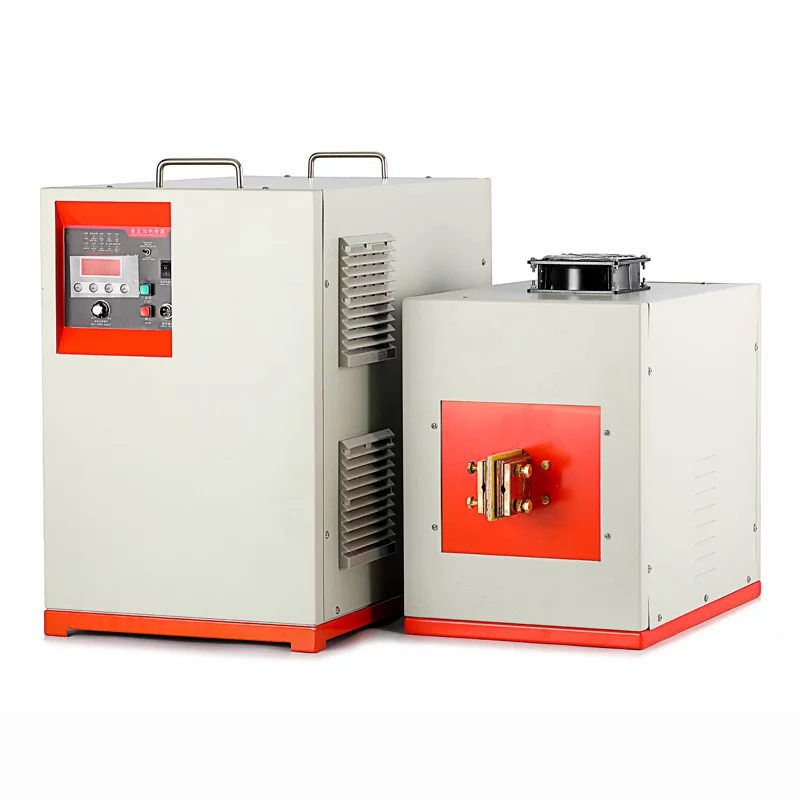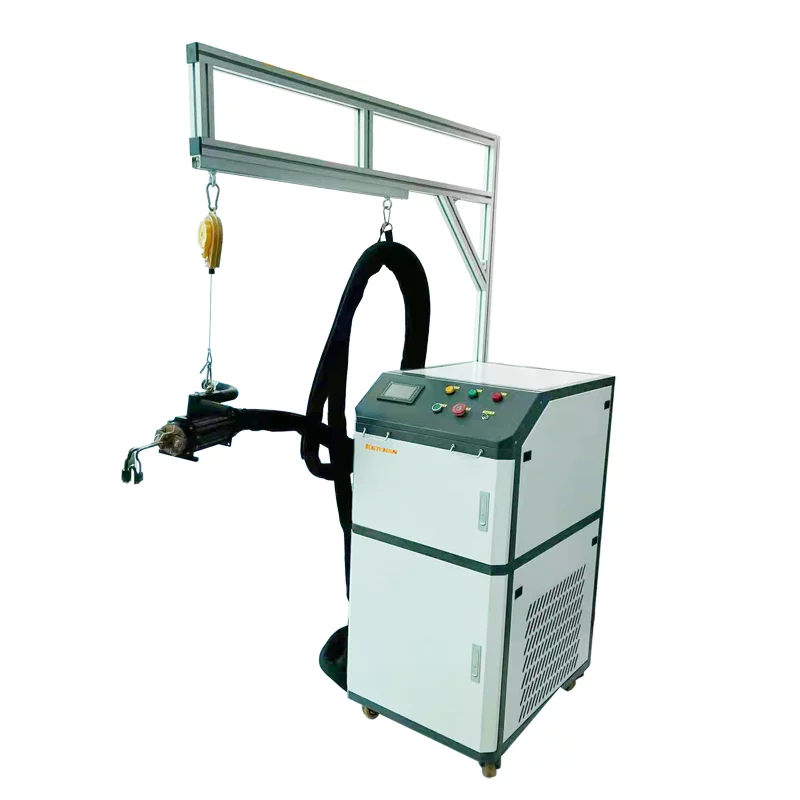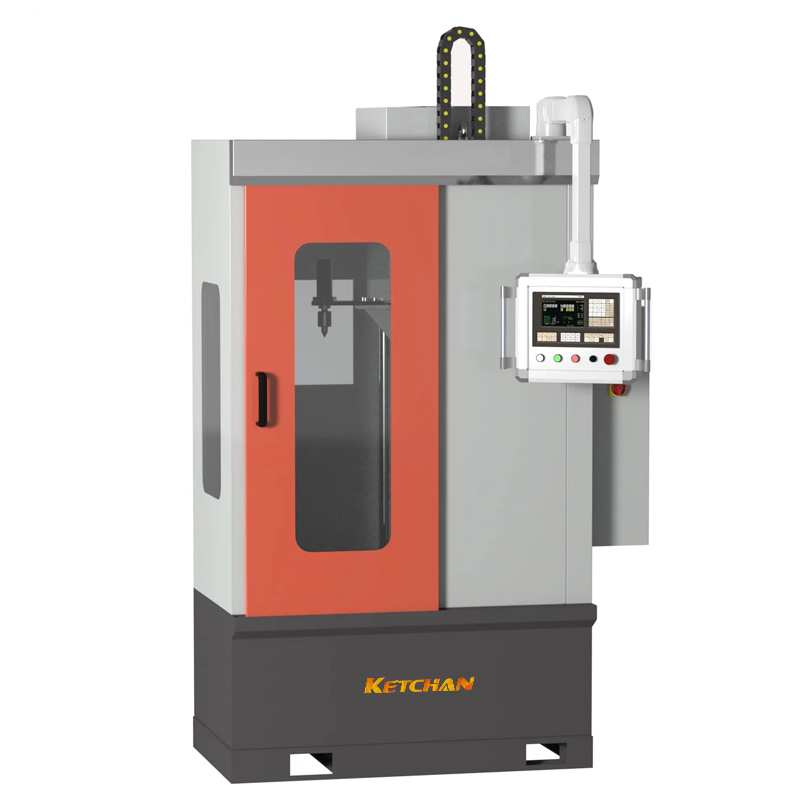Original tooth block adopts double teeth profile sensors for induction heating quenching, complex structure, high manufacturing accuracy requirement for sensors, sensor manufacturers domestic production of the sensor with high precision is expensive and cannot meet the requirements of the low accuracy, heavier, and because of sensors in use, easy to deformation correction methods are not effective, sensors using deformation occurred after a period of time, seriously affect the quenching quality, cause the quenching quality is not stable, reduce the service life of the workpiece. In order to solve this problem, a single-tooth profile inductor was made and the quenching process of single-tooth profile induction was studied.
I. Test materials and methods
(1) Test materials and technical requirements: Single tooth block is selected for quenching test, and the technical requirements are: hardness ≥50 HRC after quenching, hardened layer depth ≥18mm.
(2) Test parameters and methods: The following three test schemes were selected.
The first scheme: multiple heating is adopted. The diathermy of the waiting parts is heated for a period of time each time and then heated again with a heating frequency of 2kHz and heating power of 80kW.
In the second scheme, the heating method is the same as that in the first scheme, the heating time is 60 seconds less than that in the first scheme, the heating frequency is 2kHz, and the heating power is 80kW.
The third scheme: the heating method and time are the same as the first scheme, with a heating frequency of 10kHz and heating power of 80kW.
During the induction heating quenching process, the gap between the inductor and the chain socket is uniform. After heating, the temperature of the tooth block detected by the high temperature thermometer is 870 ~ 910℃, and the quenching medium of AQ251 is adopted.
Ii. Test results and analysis
1. Hardness test results
The tooth blocks tested in the three schemes were tested for the depth of the hardening layer. The quenching state of the tooth blocks as shown in Figure 1, the sampling position of the hardness slice as shown in Figure 2, the hardness test results were shown in Figure 3, Figure 4, and Figure 5, and the hardness of the slice as shown in Figure 6 (ordinate is the distance above 50HRC from the surface).In the actual test, the maximum hardness of the three dental blocks is 59HRC, and the maximum hardness is basically the same, indicating that the same material has the same quenching hardness after quenching in the three schemes.
FIG. 1 Quenching diagram of tooth block
FIG. 2 Position of hardness section of tooth block
Figure 3. All slices of scheme
FIG. 4 Section of Scheme 2
Fig.5 Three sections in scheme 5
FIG. 6 Depth curve of the hardened layer of tooth slice
2. Result analysis
(1) It can be seen from the hardness test results of tooth slice that the shallowest and deepest hardening layer of tooth block after quenching in scheme 1 is 18mm and 21mm respectively, which meet the technical requirements. After quenching in schemes 2 and 3, the shallowest and deepest hardening layer is 9mm and 15mm respectively, which fail to meet the technical requirements.
(2) to plan the second section of the depth of hardening layer, the results were analyzed, and the theoretical calculation, when the frequency is 2 KHZ, theory of hardening layer depth of DS = 11 mm, 18 mm to get acuity of hardening layer depth, surface by eddy current heating, is greater than the depth of the vortex region must rely on heat transfer, the data summary, when choosing the heating frequency, frequency of 0.33 < DS/d < 1 (d for actual workpiece hardening layer depth), the optimal frequency, DS/d = 0.5, the former two kinds of process parameters, heating temperature of workpiece achieves quenching temperature, the first kind of scheme of heating time is long,Workpiece heating as well as on the surface of eddy current heating is greater than the depth of eddy current areas must be heated by heat conduction, thus meet the technical requirements after quenching hardening layer depth, but for the second parameter, the test program for less heating time, mainly by eddy current heating surface, using the heat conduction heating time is shorter, lead to slice the depth of hardening layer can not meet the technical requirements.
(3) to plan three sections of the depth of hardening layer, the results were analyzed, and the theoretical calculation, when the frequency of 10 kHz, theory of hardening layer depth of DS = 5 mm, according to the DS/d = 5/15 = 0.33, belongs to the lower limit frequency selection, this heating method to reach of 18 mm or the depth of hardening layer, surface by eddy current heating can not meet the technical requirements, is greater than the depth of eddy current heating of heat transfer area mainly rely on the heating method of heating efficiency is low, the surface degree of superheat, technical difficulty is high, this method is not recommended.
(4) Efficiency comparison: The quenching efficiency of double-tooth copy inductor and single-tooth copy inductor was compared, and the quenching efficiency of single-tooth copy inductor was reduced by 30% compared with that of double-tooth copy inductor.
(5) The service life of the sensor is improved. The original dual-tooth sensor usually has a service life of 3 months, but now the normal service life of the single-tooth sensor is 9 months, and the service life of the sensor is increased by 3 times.
3. Endnotes
(1) The selection of quenching frequency of induction heating is quite critical, and it is generally recommended to adopt a penetration-type heating method.
(2) After quenching with a single-tooth profile inductor, the hardness reaches up to 59HRC and the depth of the hardening layer is ≥18mm. Compared with the original double-tooth profile sensor, the heating efficiency is reduced by 30%. However, for this key product, the stability of quenching quality is the key, so it is recommended to use a single-tooth profile sensor.











